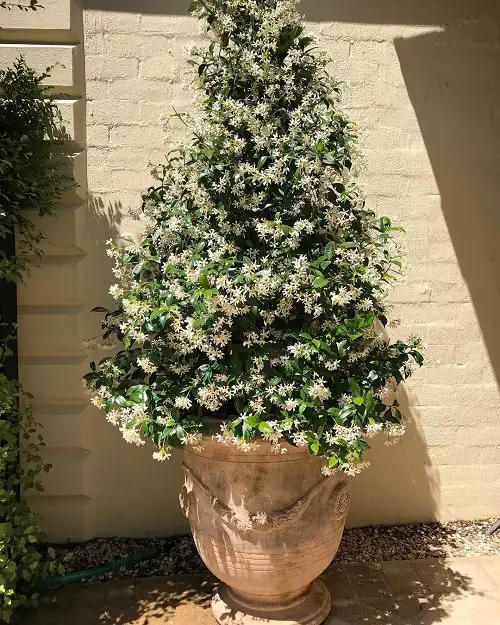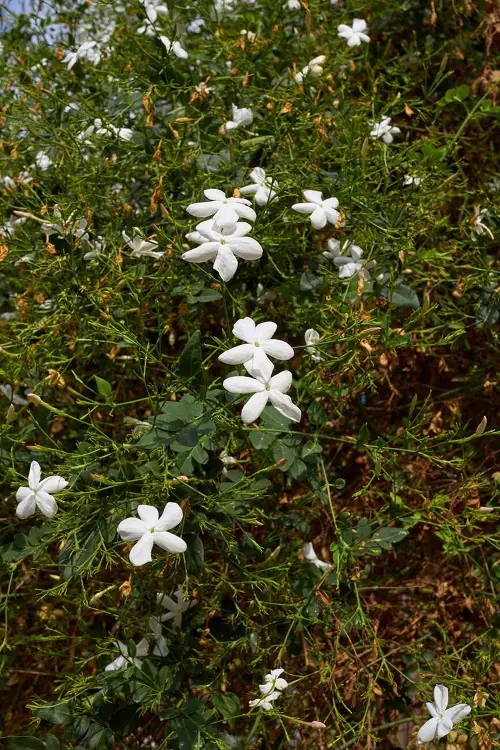We’ve curated a list of the Best Frost-Tolerant Jasmine Varieties so you can enjoy beautiful blooms even during the chilly months!
Most fragrant blooms wither away in harsh, cold weather, but not the ones we’ve listed below! Here are the best frost-tolerant jasmine varieties that thrive in chilly terrains for a garden filled with scented flowers.
Best Frost Tolerant Jasmine Varieties
1. Winter Jasmine
Botanical Name: Jasminum nudiflorum
USDA Zones: 6-11
Native to the cold terrains of Tibet and Central China, winter jasmine bears cheery yellow flowers from late winter to early spring. Unlike many other jasmine varieties, this one has no scent or very faint, barely noticeable sweet fragrance, but it covers it with its appearance and ability to attract many beneficial insects.
This low-maintenance perennial shrub needs at least six hours of bright sunshine daily to flourish. It can also tolerate partial shade and thrives in slightly acidic clay, loam, or sandy soil.
2. Common Jasmine

Botanical Name: Jasminum officinale
USDA Zones: 7-12
Also known as Poet’s jasmine, this evergreen vine grows naturally from Turkey through Iran, India, and China. This variety can tolerate frost to an extent but will need shelter from long periods of extreme cold.
Poet’s jasmine flowers are often used to make tea and are known for their medicinal properties. Grow this extremely fragrant variety in moist, well-drained soil enriched with organic matter.
3. Star Jasmine
Botanical Name: Trachelospermum jasminoides
USDA Zones: 7-10
Star jasmine is technically not a true jasmine, but the name, looks, and scent make it hard to tell apart. This plant can be your favorite option for fences and trellises, where its white star-shaped flowers will fill the air with a sweet fragrance.
Several cultivars of this flower can withstand frost and moderate shade. Ensure this scented bloom gets 3-6 hours of direct sunlight daily.
Pro Tip: Even frost-tolerant varieties may benefit from some protection during severe winters, such as mulching the root zone or covering the plant with frost cloth.
4. Downy Jasmine
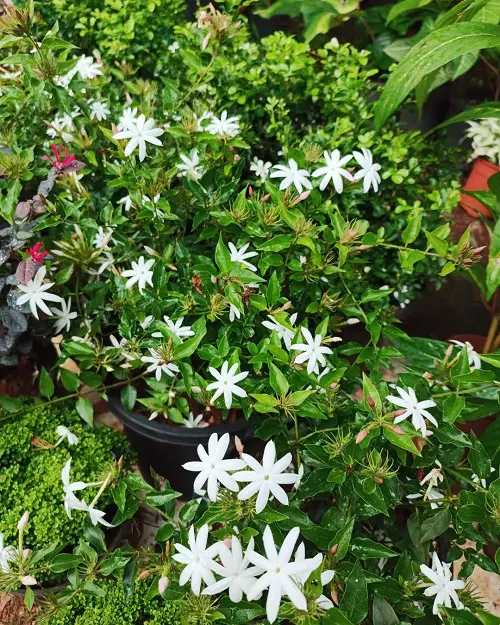
Botanical Name: Jasminum multiflorum
USDA Zones: 5-11
This fluffy jasmine variety is pretty cold-hardy in zones nine and above, and below, it can tolerate some frost when protected. Downy jasmine grows as a dense shrub; giving it some structure to climb will help it grow as a vine.
This variety’s white flowers aren’t really fragrant, but the plant’s cascading form and rapid growth are perfect for filling out spaces quickly. Water it thoroughly so the soil remains moist, ensuring the roots are not waterlogged!
5. Italian Jasmine
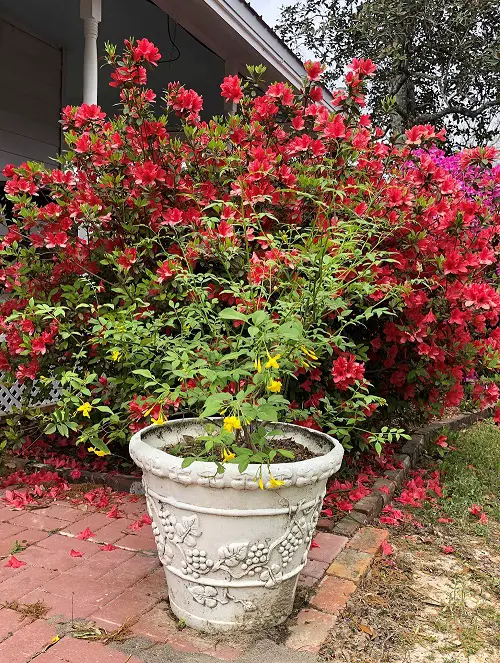
Botanical Name: Jasminum humile
USDA Zones: 7-9
This is another frost-tolerant jasmine variety with yellow tubular flowers. However, remember to add mulch to protect it from extreme cold. It grows as a spreading and arching shrub, making for an excellent focal point in gardens.
Italian jasmine is easy to care for and thrives in rich, well-drained soil and ample sunshine. This hardy flower can grow as tall as 20 feet, so remember to keep it in check!
6. Primrose Jasmine

Botanical Name: Jasminum mesnyi
USDA Zones: 7-11
Also known as Japanese jasmine, this sprawling vine has fountain-like growth and can reach 10 feet in height and width! It produces yellow, rose-like flowers in late winter to early spring and is prized in landscaping, covering fences, walls, and garden borders.
The plant tolerates some shade, but its blooms prolifically under full sun. It prefers rich, well-drained organic soil and generous watering in summer.
7. Spanish Jasmine
Botanical Name: Jasminum grandiflorum
USDA Zones: 9-12
Also called royal or Catalonian jasmine, this beautiful variety is known for its fragrant white flowers. You can grow it as a climber, and it will reach 6-12 feet in height under proper care.
Certain varieties of Spanish jasmine can withstand light frosts while providing a perfect covering for trellises or walls of your garden. During colder months, you must protect the roots; you can bring the plant indoors if needed.
Pro Tip: Regular pruning can help maintain the shape of jasmine plants and encourage healthy growth. Plus, doing it after flowering can stimulate new growth and more blooms.
8. Pink Jasmine
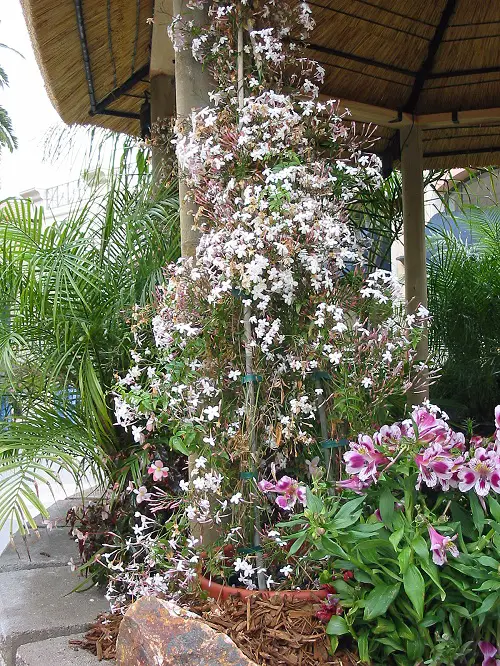
Botanical Name: Jasminum polyanthum
USDA Zones: 8-11
Like the Spanish jasmine, this fast-growing climber easily covers walls and fences with its evergreen vines, which contrast nicely against its pretty white blooms. It can tolerate dips as low as 25 F (-4 C) and pushes out blooms late winter through spring and summer.
Plant it in rich, well-drained soil for best growth and ensure regular watering.



